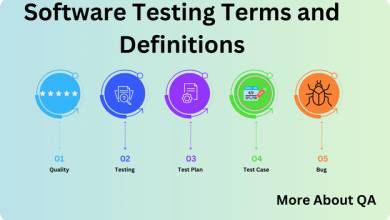In this blog, we will talk about the configuration management tool list, Configuration management in DevOps is overseeing and controlling the configuration of software systems throughout their lifecycle. This process involves tracking and upholding the uniformity and integrity of various software and hardware components, settings, and dependencies across different environments, including development, testing, and production.
In the realm of IT, Configuration Management Tools, such as Ansible, Chef, Puppet, and Terraform, provide automated solutions for efficiently managing and controlling the configuration of software systems, infrastructure, and applications. These tools play a vital role in simplifying tasks related to provisioning, deployment, and maintenance while promoting consistency and reliability across various environments.
These tools help guarantee that all elements of an application or system, such as code, databases, infrastructure, and environment variables, are correctly configured and in sync. Its primary aim is to minimize errors arising from inconsistencies or conflicts in the configuration, thus enabling the efficient deployment and maintenance of applications.
Configuration Management Tool List
here’s a list of prominent Configuration Management Tools with a short description and their key features in bullet form:
Ansible
Description: Open-source provisioning and configuration management tool.
Features:
- Infrastructure as Code (IaC)
- Simplified deployment and maintenance
Chef
Automates infrastructure provisioning and configuration.
Features:
- Streamlined server management.
Puppet
Powerful, model-driven configuration management tool.
Features:
- Cross-platform configuration enforcement
- Minimal programming knowledge required.
Git
Distributed version control system for tracking code changes.
Features:
- Holistic version control
- Integration with code repositories
Terraform
Open-source IaC platform for provisioning and managing infrastructure.
Features:
- Compatibility with multiple cloud platforms
- Safe and predictable infrastructure changes
SaltStack
Python-based, open-source software for IT automation and configuration management.
Features:
- Event-driven automation
- Reusable configuration templates (states)
AWS OpsWorks
Amazon’s configuration management service for cloud-based applications.
Features:
- Integration with Puppet or Chef
- Cloud enterprise configuration and operations management.
Other tools include Jenkins, Dockers, and Kubernetes.
What is the right tool for application configuration management and why?
The right tool for application configuration management largely depends on your specific needs and preferences. The choice depends on factors like the technology stack, infrastructure, scalability requirements, and team familiarity. Each tool has its strengths, so selecting the best one should align with your project’s unique demands.
Key Activities in Configuration Management:
- Configuration Identification: This involves identifying and documenting the configuration items (CIs) that constitute a system, including source code, libraries, configuration files, and infrastructure components.
- Configuration Control: This entails managing changes to the configuration items through versioning, change tracking, and approval processes. It ensures that changes are properly authorized, tested, and deployed.
- Configuration Status Accounting: Maintaining accurate records of the current state and history of each configuration item, including details about versions, changes, and relationships with other items.
- Configuration Verification and Audit: Conduct periodic checks and audits to verify that the configuration items and their relationships adhere to defined standards and requirements.
- Configuration Reporting: Generating reports and documentation to provide insight into the current configuration and its changes, which aids in troubleshooting, compliance, and decision-making.
- Configuration Baseline Management: Establishing baselines that represent stable and verified system configurations, serving as reference points for future changes and deployments.
Configuration management is facilitated through various tools and technologies, including version control systems (e.g., Git), configuration management tools (e.g., Ansible, Chef, Puppet), infrastructure-as-code frameworks (e.g., Terraform), and continuous integration/continuous deployment (CI/CD) pipelines.
Implementing effective configuration management practices empowers organizations to achieve greater consistency, stability, and repeatability in their software delivery processes. This leads to reduced errors, improved collaboration, and faster time to market.
Practical Uses of Configuration Management in DevOps:
- Infrastructure Provisioning: Tools like Terraform and AWS CloudFormation define and provision infrastructure resources, ensuring consistent and reproducible environments.
- Application Deployment: Tools like Ansible, Chef, or Puppet automate deployment tasks, maintaining consistency in application configurations.
- Configuration Drift Detection: Configuration management tools help detect and rectify deviations from the intended state, ensuring stable and secure environments.
- Scaling and Load Balancing: Tools like Kubernetes or Docker Swarm automate scaling and load distribution for optimal resource utilization.
- CI/CD: Configuration management is vital in CI/CD pipelines, automating the software delivery process and ensuring consistency across environments.
- Configuration Rollbacks: Configuration management tools enable easy rollbacks to a known stable configuration in case of issues, minimizing downtime and impact.
These examples illustrate how configuration management supports the principles of DevOps by efficiently managing, automating, and ensuring consistency in infrastructure and application configurations.”
Why Is Configuration Management Essential?
Configuration management (CM) is a cornerstone in the world of DevOps, and its significance can’t be overstated. Here are several compelling reasons why it’s so vital:
- Consistency: CM guarantees that servers, applications, and systems are configured uniformly and consistently. This minimizes the likelihood of errors and disparities in configuration.
- Transparency and Audibility: CM systems allow for effortless tracking of configuration changes. This transparency and audibility are crucial for understanding and managing configurations effectively.
- Scalability: CM simplifies infrastructure provisioning and scaling. Adding more servers or applications to the environment becomes a straightforward process, supporting scalability.
- Dependability: CM ensures that all components are configured reliably and appropriately. This, in turn, enhances the overall performance and reliability of the environment.
- Compliance: CM provides the means to document and audit configuration changes, aiding in compliance with regulatory requirements and best practices.
- Disaster Recovery: In the face of calamities, CM enables quick recovery by allowing easy rollbacks to previous configurations, reducing downtime and disruption.
- Efficiency: By reducing the need for manual configuration, CM saves both time and money. It automates repetitive tasks, streamlining processes.
- Collaboration: CM ensures that all stakeholders share the same information and are on the same page. It fosters collaboration between teams, leading to the development of better applications and services at a faster pace.
- Cost Savings: The automation provided by CM not only saves time but also cuts down on the need for manual intervention. This translates into cost savings for organizations.
| # | Advantages of Configuration Management | Disadvantages of Configuration Management |
| 1 | Efficiency | Resource-Intensive |
| 2 | Risk Reduction | System Requirements |
| 3 | Change Management | Continuous Adaptation |
| 4 | Rapid Recovery | No Recovery system |
| 5 | Agility, Reliability, Control, Cost Savings | The initial design requires regular revisions to accommodate changes in scope and business needs. |
Conclusion | Configuration Management Tool List
If you are looking for a fast and simple way to get things done, Configuration Management is the answer. We have talk about configuration management tool list, with a brief explanation that could help you in selecting the right tool that meets your business needs.
In a nutshell, Configuration Management is the backbone of DevOps, promoting consistency, efficiency, and collaboration while reducing errors and costs.


